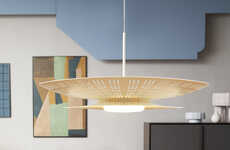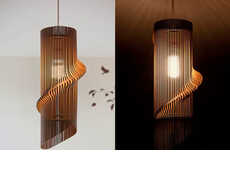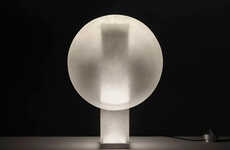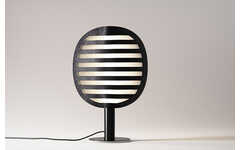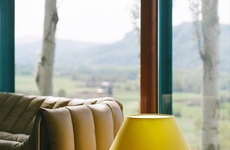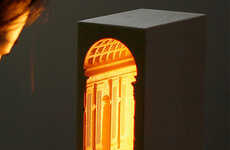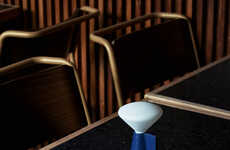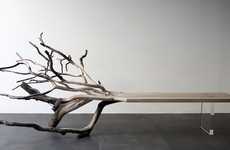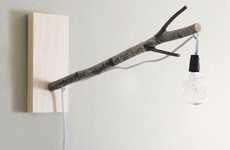
Magnus Pettersen's Tint Lamp Pairs Two Unlikely Materials
Meghan Young — August 17, 2011 — Art & Design
References: magnuspettersen & contemporist
It is not often you see a light fixture like the Tint Lamp. Instead of a typical lampshade or an untouched glass cover, the Tint Lamp boasts a modern stained glass detail that gives it a unique and sophisticated overall look.
Created by London-based Norwegian designer Magnus Pettersen, the Tint Lamp also pairs two unlikely materials together: glass and concrete. the fragile nature of one beautifully balances the sturdy presence of the other, creating a harmony between the two that is completely feng shui.
According to Pettersen, by “using black concrete and a warm coloured glass, [it] transforms the hard materials into an object which suits an interior environment.” Debuting during the 100% Norway exhibition, the Tint Lamp will definitely steal the show.
Created by London-based Norwegian designer Magnus Pettersen, the Tint Lamp also pairs two unlikely materials together: glass and concrete. the fragile nature of one beautifully balances the sturdy presence of the other, creating a harmony between the two that is completely feng shui.
According to Pettersen, by “using black concrete and a warm coloured glass, [it] transforms the hard materials into an object which suits an interior environment.” Debuting during the 100% Norway exhibition, the Tint Lamp will definitely steal the show.
Trend Themes
1. Stained Glass Lighting - Using stained glass in lighting fixtures creates a unique and sophisticated look, offering a disruptive innovation opportunity for the lighting industry.
2. Unconventional Material Pairing - Pairing unlikely materials, such as glass and concrete, in design creates a harmonious and visually striking effect, providing a disruptive innovation opportunity for the materials industry.
3. Feng Shui Inspired Design - Incorporating elements of feng shui in design, like balancing delicate and sturdy materials, creates an aesthetically pleasing and harmonious environment, presenting a disruptive innovation opportunity for the interior design industry.
Industry Implications
1. Lighting - The use of stained glass in lighting fixtures presents a disruptive innovation opportunity by offering unique and visually appealing options for lighting designers.
2. Materials - Exploring unconventional material pairings, such as glass and concrete, unlocks new possibilities for designers and manufacturers, leading to disruptive innovations in the materials industry.
3. Interior Design - Integrating feng shui principles, such as balancing delicate and sturdy materials, in interior design enhances the aesthetic appeal and creates disruptive innovation opportunities in the industry.
1.3
Score
Popularity
Activity
Freshness


